Zinc at an altitude of 1011 meters
In Loen by the Nordfjord in Norway, you can get to the top of the mountain Hoven with one of the world's steepest cable cars. The station in the valley and on top of the mountain is clad in zinc on the roof and facades, and the choice of natural materials means that the buildings fit in well with the magnificent Norwegian mountain landscape.
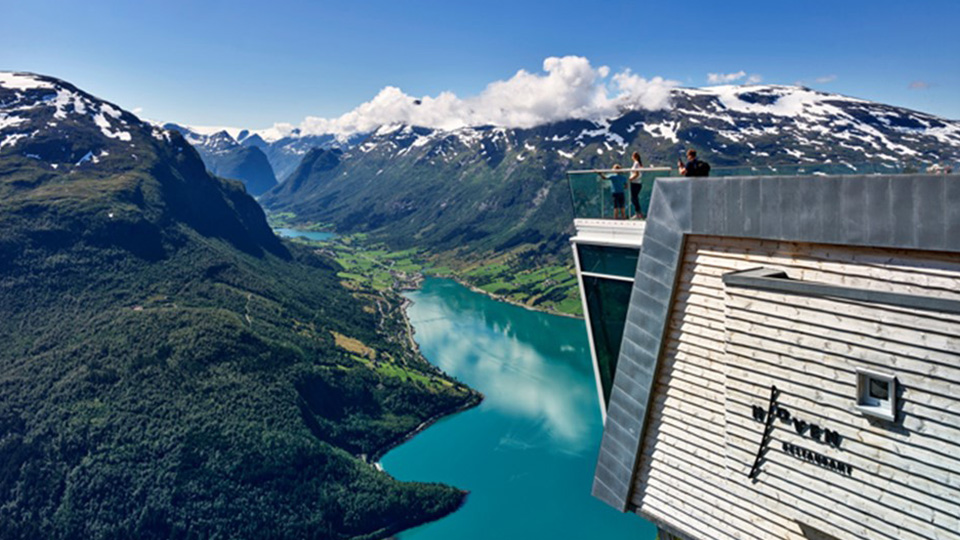
One of the world's steepest cable cars
The Loen Skylift is one of the world's steepest cable cars, and was created to make the nature, the view and the hiking routes at the top of the mountain accessible to everyone.
The cable car's two gondolas transport guests from the Loen valley station at the Innvikfjord up to the mountain station at 1011 meters above sea level. Both in the valley and high on the mountain, visitors will encounter zinc facades and roofing.
In addition to the cable car's two stations, zinc can also be found at the Hoven Restaurant, which has a fantastic panoramic view of the fjords and mountains.

Loen Skylift's station at the foot of the mountain is clad in a mixture of shiny zinc, wood and glass. From here it goes up to the mountain station at 7 meters per second.
Tailored for the mountain
The architects from Aaland Arkitektkontor AS based near Loen have designed the building in such a way that it integrates as best as possible into the fjord and mountain landscape and thus changes the natural surroundings as little as possible. The design of roofs and facades was developed together with VMZINC.
The valley station at the foot of the mountain is made of a mixture of reddish-brown wood, zinc on the facade and a standing zinc hipped roof, which blends in well with the wooded landscape.
At the rocky mountain station, the wood on the facade quickly took on a more silvery gray shade in the harsh weather – a color that goes well with the zinc on the facades, and makes the building fit in well with the treeless mountain landscape.
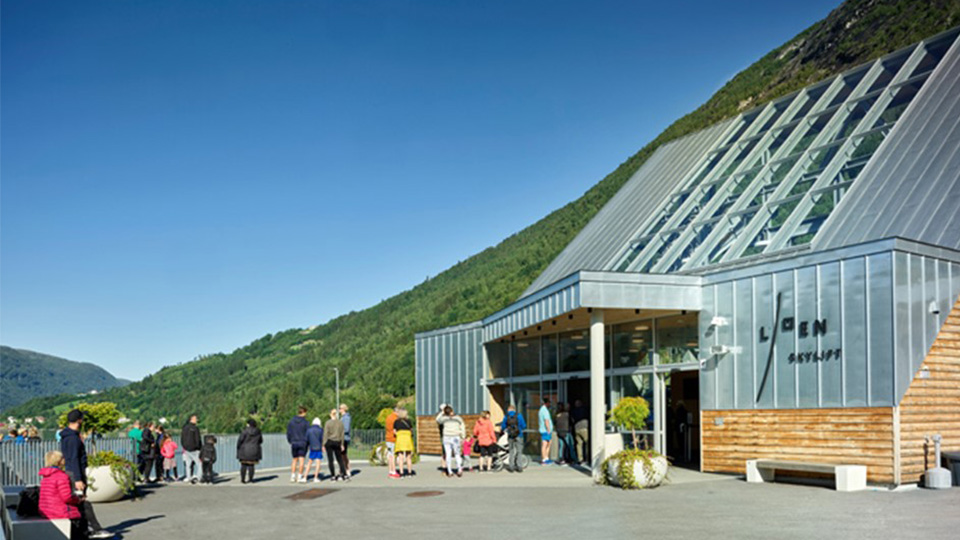
A criterion in the planning and construction of the stations was to change the natural environment as little as possible.
Patina build-up on the zinc facade
VMZINC Natur is used for both buildings, as the natural formation of patina was very important to the architects. The surface of the metal gradually changes as a result of a reaction with the atmosphere. This eventually creates the dull gray shade that zinc is known for.
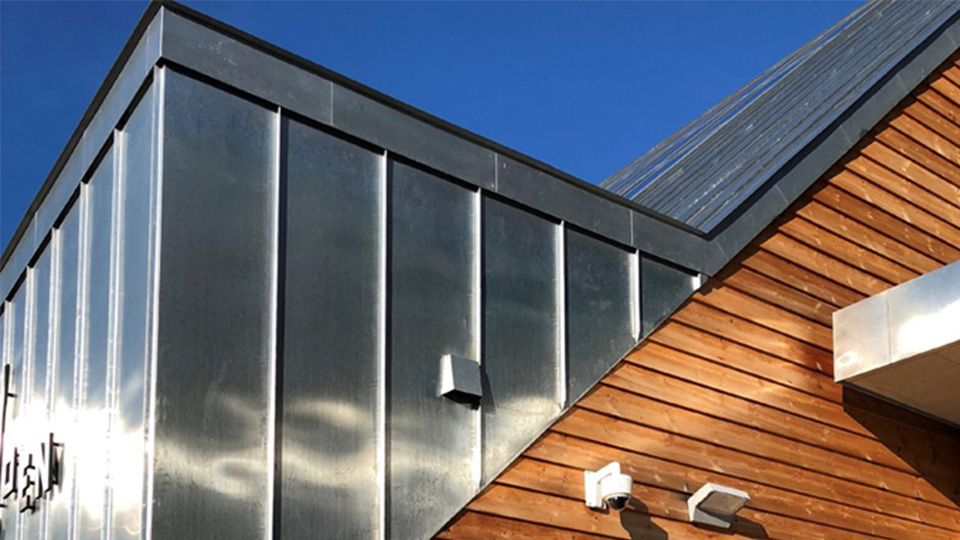
The architects chose the glossy VMZINC Natur because it reacts to the environment and develops a beautiful patina.
Panoramic terrace in a completely smooth look
On the panoramic terrace, the zinc is installed using the "continuous ridge rebate" technique, where the individual elements are joined in such a way that a completely smooth overlap is created, where the joints almost disappear. This required not only very good craftsmanship on the part of the processing company, but also very detailed planning prior to assembly.
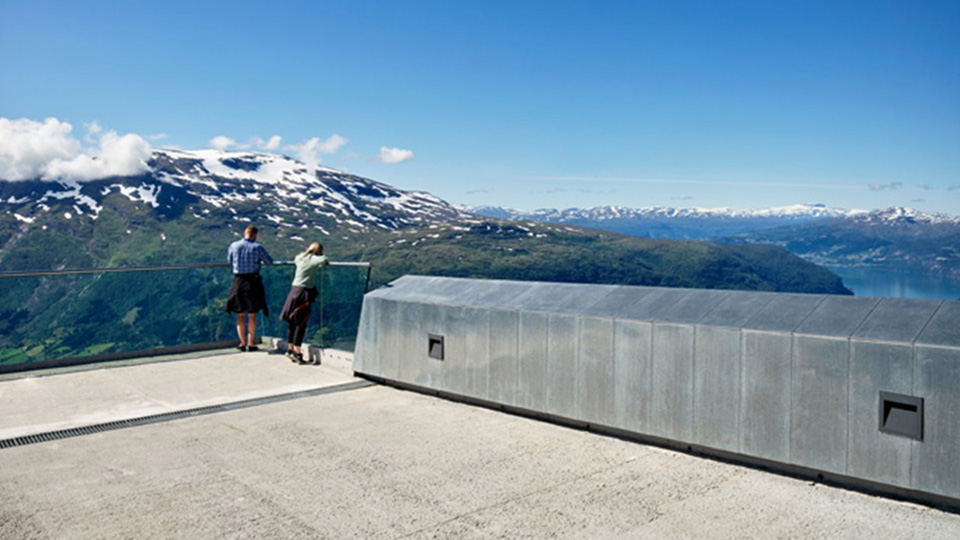
Completely smooth zinc surface on the Panorama Terrace. The zinc elements are mounted with the continuous chin rebate technique.
Real craftsmanship
The artistic skills of Erwin Nielsen, technical manager at VMZINC, played a major role in the planning and in the communication between architects, the plumber's firm and VMZINC. He made numerous drawings which show the individual work processes and assemblies in three dimensions. These works are exclusively high quality hand drawings.
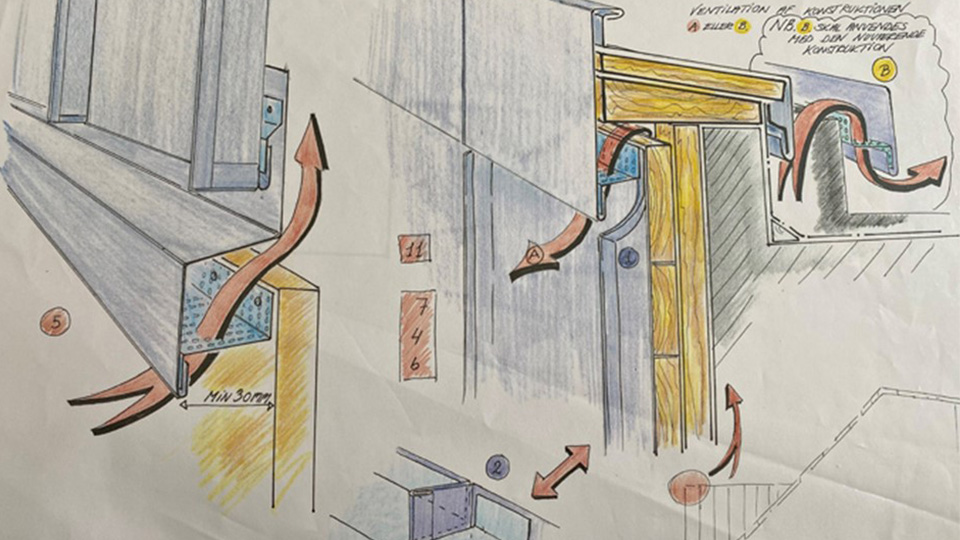
VMZINC employee Erwin Nielsen's artistic skills formed the basis for the professional execution of the plumbing work.
Between mountain and valley
The construction of the mountain station proved to be a bit of a challenge in the harsh weather on the Norwegian mountains. Not infrequently the wind reached speeds that made it impossible to continue work. In addition to the wind, blizzards have also repeatedly affected construction.
These forces of nature contributed to the fact that the fixing of the zinc roof is calculated for a wind load of 90 meters per second, and thus should be able to withstand even the strongest storms and hurricanes. Visitors can enjoy a unique view of the spectacular mountains and fjords of western Norway from the mountain station's terrace.
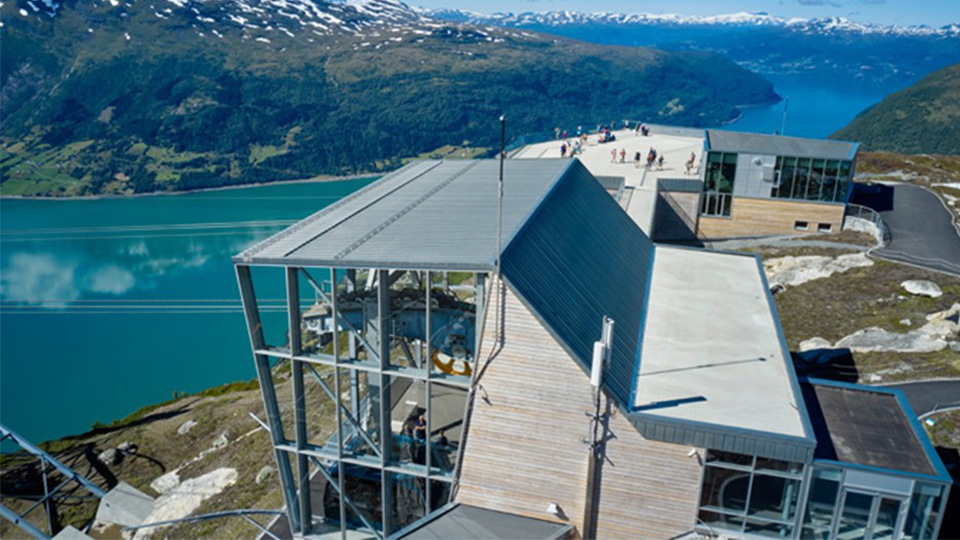
At an altitude of over 1000 metres, Norway can expect a lot of snow and strong winds for most of the year. The fastening of the zinc roofing is therefore intended for the highest wind speeds.